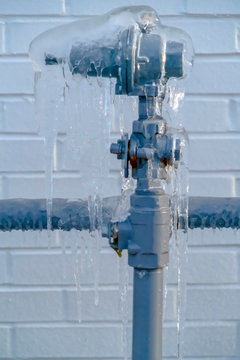Safeguarding Pipes from Cold Weather Issues: Essential Approaches
Safeguarding Pipes from Cold Weather Issues: Essential Approaches
Blog Article
Just about every person will have their own individual way of thinking about Prevent Frozen Pipes .

Winter can damage your pipes, specifically by freezing pipes. Below's exactly how to prevent it from occurring and what to do if it does.
Intro
As temperatures decline, the danger of frozen pipes rises, possibly bring about expensive repair services and water damage. Comprehending exactly how to stop icy pipelines is important for house owners in cool environments.
Comprehending Icy Pipelines
What triggers pipelines to ice up?
Pipelines freeze when subjected to temperatures listed below 32 ° F (0 ° C) for extended durations. As water inside the pipes freezes, it broadens, putting pressure on the pipe walls and potentially causing them to burst.
Threats and problems
Icy pipes can bring about water supply disruptions, building damages, and pricey fixings. Ruptured pipelines can flood homes and trigger considerable architectural damage.
Indicators of Frozen Water Lines
Recognizing frozen pipes early can stop them from breaking.
How to determine icy pipes
Try to find decreased water circulation from faucets, uncommon smells or sounds from pipelines, and noticeable frost on exposed pipelines.
Avoidance Tips
Insulating susceptible pipelines
Wrap pipelines in insulation sleeves or make use of warmth tape to shield them from freezing temperature levels. Concentrate on pipes in unheated or outside locations of the home.
Heating methods
Keep interior rooms properly heated up, especially locations with pipes. Open up cabinet doors to allow warm air to flow around pipes under sinks.
Safeguarding Outside Pipes
Yard pipes and exterior faucets
Disconnect and drain yard pipes before winter season. Set up frost-proof spigots or cover exterior faucets with protected caps.
What to Do If Your Pipelines Freeze
Immediate actions to take
If you believe frozen pipes, maintain taps available to relieve pressure as the ice melts. Use a hairdryer or towels soaked in warm water to thaw pipelines slowly.
Long-Term Solutions
Architectural adjustments
Think about rerouting pipes away from exterior walls or unheated locations. Include additional insulation to attics, cellars, and crawl spaces.
Updating insulation
Invest in top quality insulation for pipelines, attics, and walls. Appropriate insulation helps maintain constant temperature levels and minimizes the danger of frozen pipelines.
Final thought
Stopping frozen pipes needs positive procedures and quick responses. By recognizing the causes, indications, and safety nets, house owners can secure their plumbing throughout cold weather.
5 Ways to Prevent Frozen Pipes
Drain Outdoor Faucets and Disconnect Hoses
First, close the shut-off valve that controls the flow of water in the pipe to your outdoor faucet. Then, head outside to disconnect and drain your hose and open the outdoor faucet to allow the water to completely drain out of the line. Turn off the faucet when done. Finally, head back to the shut-off valve and drain the remaining water inside the pipe into a bucket or container. Additionally, if you have a home irrigation system, you should consider hiring an expert to clear the system of water each year.
Insulate Pipes
One of the best and most cost-effective methods for preventing frozen water pipes is to wrap your pipes with insulation. This is especially important for areas in your home that aren’t exposed to heat, such as an attic. We suggest using foam sleeves, which can typically be found at your local hardware store.
Keep Heat Running at 65
Your pipes are located inside your walls, and the temperature there is much colder than the rest of the house. To prevent your pipes from freezing, The Insurance Information Institute suggests that you keep your home heated to at least 65 degrees, even when traveling. You may want to invest in smart devices that can keep an eye on the temperature in your home while you’re away.
Leave Water Dripping
Moving water — even a small trickle — can prevent ice from forming inside your pipes. When freezing temps are imminent, start a drip of water from all faucets that serve exposed pipes. Leaving a few faucets running will also help relieve pressure inside the pipes and help prevent a rupture if the water inside freezes.
Open Cupboard Doors
Warm your kitchen and bathroom pipes by opening cupboards and vanities. You should also leave your interior doors ajar to help warm air circulate evenly throughout your home.

As a fervent person who reads about Helpful Tips to Prevent Frozen Pipes this Winter, I assumed sharing that piece of content was a smart idea. Loved our content? Please share it. Let someone else find it. I am grateful for being here. Return soon.
Visit Homepage Report this page